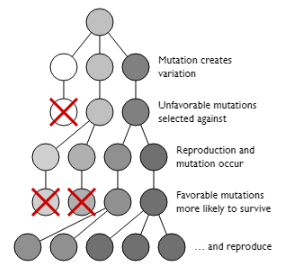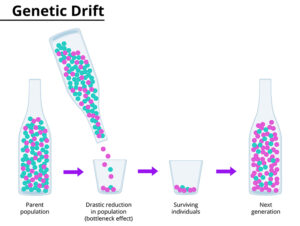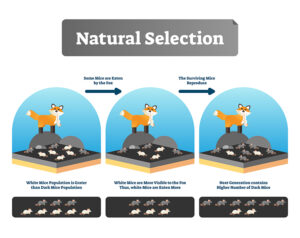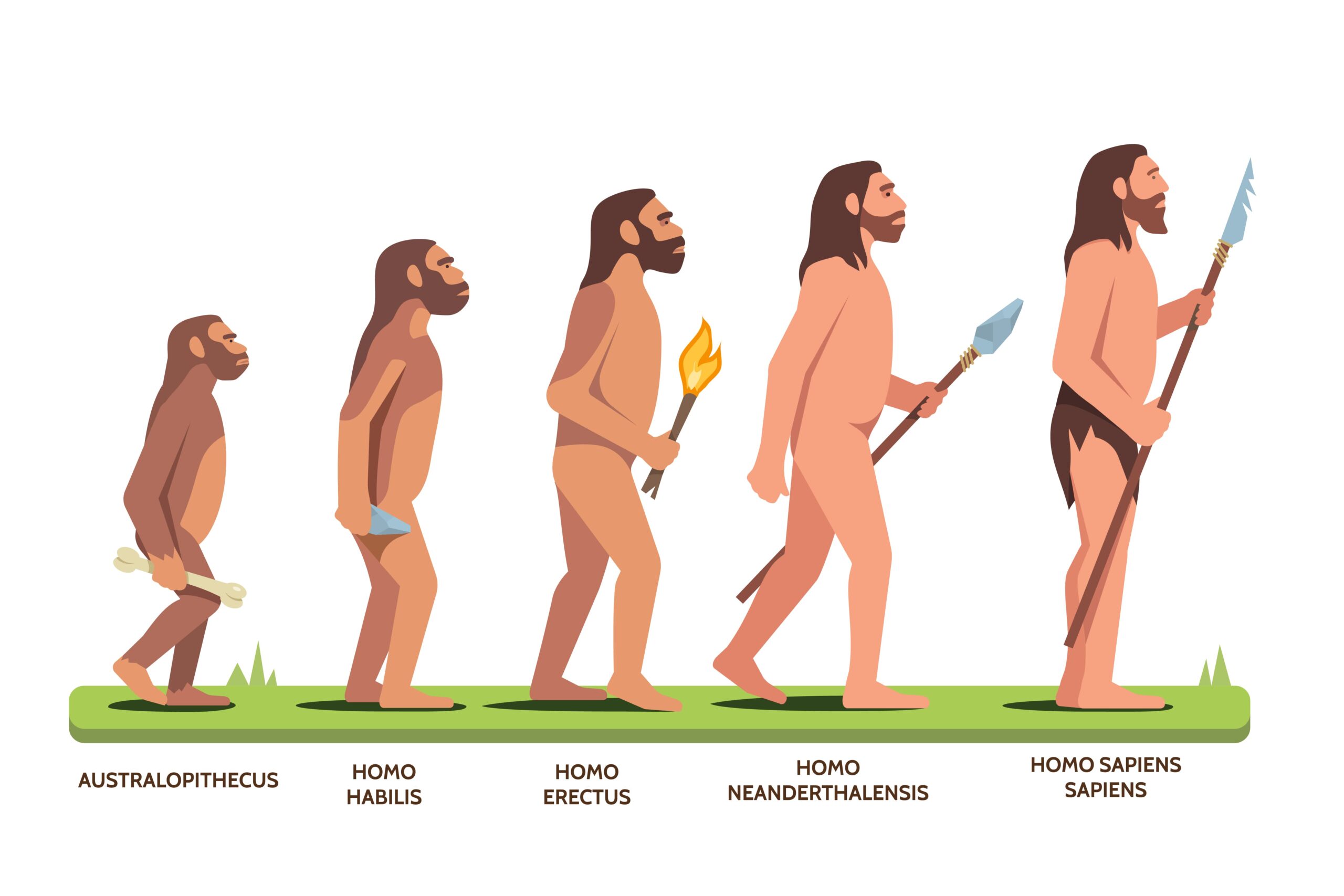Introduction: Evolution
It was once thought that all life forms on earth were created exactly as they are now. Some people believed that the earth’s living things originated on another planet and were then brought here. Many outdated preconceptions were swept aside by the idea and theory of evolution. According to the concept of evolution, all complex species descended from a single, primordial ancestor, from which they evolved by a series of small, progressive changes in response to the environment.
This shift is a gradual process that has occurred, is occurring, and will continue to occur. This is due to the fact that living things adapt to their ever-changing circumstances and develop characteristics that are essential to their survival.
Such a slow and gradual process that resulted in the occurrence of new traits within a population and gave rise to new species is called evolution. Evolution is fueled by a variety of processes, including gene mutations, genetic drift, gene flow, non-random mating, and natural selection. After hundreds of years of evolution, new life forms that outnumber some species are created that are better suited for survival.
Is Evolution a Random Process?
The creatures experience genetic alterations, which show up in their physical characteristics. Individuals with acquired genetic qualities outlive their contemporaries more successfully than those without them. Over time, acquired physical traits are passed on to the following generations. In order to survive, an individual must obtain food and stay away from predators. Although evolution is a gradual process, the factors like genetic drift and mutation that contribute to mutation are random.
Factors Contributing to Evolution
Mutation
Changes at the DNA level, such as mutations and recombinations, produce new alleles, which are then thought of as the cause of novel phenotypic traits. These alleles are spread throughout a population through breeding and are only passable through sexual chromosomal alterations. These hereditary traits and acquired traits develop through breeding generations to become distinctive characteristics of that particular group. The population finally diverges in various ways from its ancestor. Those lacking inherent adaptive characteristics fade away when faced with unfavorable conditions. While those with adaptable traits pass them on to their offspring and grow in number. Evolution is influenced by mutations in this way. Some mutations are detrimental and dangerous because they interfere with an organism’s ability to survive. During development, this can result in lethal circumstances. Additionally, since genetic mutations are unpredictable, they cannot be the only force behind the extensive process of evolution.

Mutation and selection
Genetic Drift
There may occasionally be abrupt and arbitrary shifts in allele frequencies within a small population. Regardless of the benefits or drawbacks of a given allele, it may even result in its eradication. Genetic drift is the term for the haphazard evolution that occurs in small populations as a result of variations in allele frequency. Despite the fact that it can happen in huge populations, its effects on evolution are best seen in small groups. For instance, a population that recently experienced a natural disaster that significantly reduced its size experiences genetic drift. It might result in the eradication of a certain allele from the population. Genetic drift, however, occurs by chance.

Natural selection
Natural selection is a purely selective process in which those with superior features earn the capacity to survive. The survival of any population and its propagation greatly depends on its interaction with the environment, regardless of how much a mutation or genetic drift contributes to a physical change. Every individual in a population goes through a serious struggle just to survive. New characteristics that are necessary for an individual’s survival are preserved by natural selection. It facilitates the selection of advantageous features required for better environmental adaptability of organisms. Individuals who possess positive attributes tend to reproduce more frequently. In this approach, unfavorable features gradually become less prevalent across the board due to natural selection. Due to this, evolution appears to be a more deliberate process than a sudden and haphazard one.

Are evolution and “survival of the fittest” the same thing?
Natural selection operates through a mechanism known as “survival of the fittest.” In his postulates, Charles Darwin claimed that people compete with one another in order to survive. He described it as a struggle for survival. Individuals within a species or between species may compete for food, territory, water, light, and mates (in cases of sexual reproduction). Only those who are capable enough can withstand this competition and live. Darwin claimed that only those who are “fit” enough can “survive,” in other words.
The survival of the fittest is not the same as evolution, which is a more general concept. According to the theory of survival of the fittest, those with desirable traits can pass those traits down to future generations while eradicating the population’s bad features. In order to speciate (create new species), evolution demands that the strongest individuals overwhelm the weaker ones.
Summary
The evolution of all living species on earth has been gradual and slow. Several factors, including gene mutations, genetic drift, and natural selection, support it. Physical characteristics are acquired as a result of genetic diversity. Darwin claimed that there is fierce competition between members of the same species or distinct species for resources including food, water, space, light, and mate. Those who are physically capable can survive. Fitness has less to do with physical fitness and more to do with an organism’s capacity to prosper in its environment. A species doesn’t just appear; it takes millions of year.
Frequently Asked Questions
1. What is the meaning of macroevolution and microevolution?
Ans: Evolution is a change in an organism’s genetic makeup that leads to some degree of speciation. The naked eye cannot see changes in DNA sequences or allele frequencies. It’s known as microevolution. Larger changes in physical features and consequently performance, combined with other factors like natural selection, result from changes in genetic makeup, leading to the emergence of new species. It’s known as macroevolution.
2. Is there any relation existing between the species surviving in this world?
Ans: Earth’s species share a common ancestor. By passing features down from one generation to the next and repeatedly splitting from the original species, species evolved from a common ancestor over millions of years. This develops over many generations and creates new species that are completely distinct from their ancestor.
3. How can understanding anatomy help in understanding evolution?
Ans: In order to understand the lineages, scientists examine the physical characteristics of living species and contrast them with those of extinct species. Tracing the changes in an anatomical feature over the years helps to understand the probable changes that must have occurred in the environment through the years that forced the changes that have occurred.
